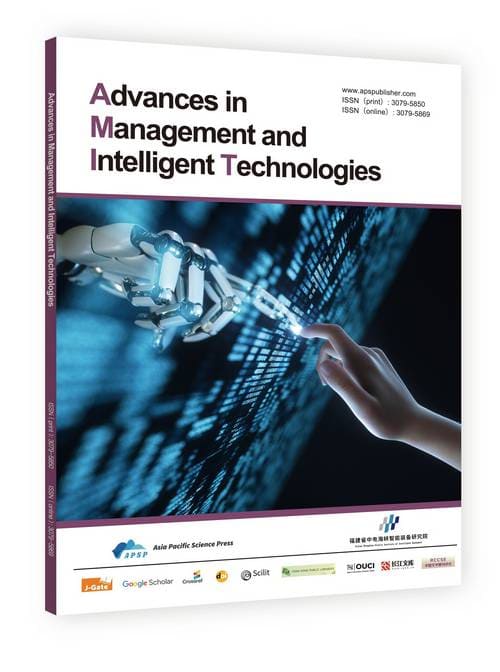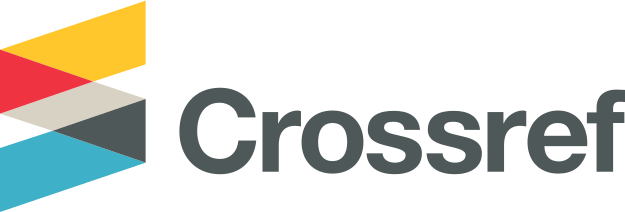Optimizing Discount Allocation with Deep Learning in Competitive Markets
DOI:
https://doi.org/10.62177/amit.v1i3.471Keywords:
Discount Allocation, Deep Learning, Competitive Pricing, Customer Segmentation, Dynamic Promotion, Intelligent PricingAbstract
In today’s highly competitive markets, discount strategies play a pivotal role in customer acquisition and retention. Traditional discount allocation methods, however, often fail to account for real-time changes in consumer behavior and competitor pricing. This paper proposes a deep learning-based framework to optimize discount allocation across customer segments, leveraging historical sales data and competitor activity to dynamically tailor promotions. Experimental evaluations on synthetic retail datasets show that the proposed model significantly improves conversion rates and overall profitability compared to rule-based benchmarks. This study demonstrates the potential of intelligent pricing systems to deliver personalized value while maintaining market competitiveness.
Downloads
References
. Vulkan, N. (2020). The economics of e-commerce: a strategic guide to understanding and designing the online marketplace.
. Wu, B., Shi, Q., & Liu, W. (2025). Addressing Sensor Data Heterogeneity and Sample Imbalance: A Transformer-Based Approach for Battery Degradation Prediction in Electric Vehicles. Sensors.
. Rane, N. L., Paramesha, M., Choudhary, S. P., & Rane, J. (2024). Artificial intelligence, machine learning, and deep learning for advanced business strategies: a review. Partners Universal International Innovation Journal, 2(3), 147-171.
. Razzaq, K., & Shah, M. (2025). Machine learning and deep learning paradigms: From techniques to practical applications and research frontiers. Computers, 14(3), 93.
. Van Chau, D., & He, J. (2024). Machine Learning Innovations for Proactive Customer Behavior Prediction: A Strategic Tool for Dynamic Market Adaptation.
. Jin, J., Xing, S., Ji, E., & Liu, W. (2025). XGate: Explainable Reinforcement Learning for Transparent and Trustworthy API Traffic Management in IoT Sensor Networks. Sensors (Basel, Switzerland), 25(7), 2183.
. Mosavi, A., Faghan, Y., Ghamisi, P., Duan, P., Ardabili, S. F., Salwana, E., & Band, S. S. (2020). Comprehensive review of deep reinforcement learning methods and applications in economics. Mathematics, 8(10), 1640.
. Guo, L., Hu, X., Liu, W., & Liu, Y. (2025). Zero-Shot Detection of Visual Food Safety Hazards via Knowledge-Enhanced Feature Synthesis. Applied Sciences.
. Kia, M. (2025). Attention-guided deep learning for effective customer loyalty management and multi-criteria decision analysis. Iran Journal of Computer Science, 8(1), 163-184.
. Yang, Y., Wang, M., Wang, J., Li, P., & Zhou, M. (2025). Multi-Agent Deep Reinforcement Learning for Integrated Demand Forecasting and Inventory Optimization in Sensor-Enabled Retail Supply Chains. Sensors (Basel, Switzerland), 25(8), 2428.
. Gupta, S., Modgil, S., Bhattacharyya, S., & Bose, I. (2022). Artificial intelligence for decision support systems in the field of operations research: review and future scope of research. Annals of Operations Research, 308(1), 215-274.
. Gonen, L. D., Tavor, T., & Spiegel, U. (2024). Unlocking Market Potential: Strategic Consumer Segmentation and Dynamic Pricing for Balancing Loyalty and Deal Seeking. Mathematics, 12(21), 3364.
. Frühwirth, T. (2025). Principles of Rule-Based Programming. BoD–Books on Demand.
. Rohilla, A., Kundu, T., Kapoor, R., & Sheu, J. B. (2025). Enhancing retail inventory replenishment amid product life cycle shifts: A system dynamics approach. IEEE Transactions on Engineering Management.
. Poli, N. S., & Sikder, A. S. (2023). Predictive Analysis of Sales Using the Apriori Algorithm: A Comprehensive Study on Sales Forecasting and Business Strategies in the Retail Industry.: Predictive Analysis of Sales Using the Apriori Algorithm. International Journal of Imminent Science & Technology., 1(1), 1-16.
. Santos, M. (2021). Optimizing Digital Advertising with Big Data: Analyzing Consumer Behavior for Real-Time Decision Making. Nuvern Applied Science Reviews, 5(12), 1-8.
. Shao, Z., Wang, X., Ji, E., Chen, S., & Wang, J. (2025). GNN-EADD: Graph Neural Network-based E-commerce Anomaly Detection via Dual-stage Learning. IEEE Access.
. Sarker, I. H. (2021). Deep learning: a comprehensive overview on techniques, taxonomy, applications and research directions. SN computer science, 2(6), 1-20.
. Manzoor, A., Qureshi, M. A., Kidney, E., & Longo, L. (2024). A review on machine learning methods for customer churn prediction and recommendations for business practitioners. IEEE access.
. Ahmed, S. F., Alam, M. S. B., Hassan, M., Rozbu, M. R., Ishtiak, T., Rafa, N., ... & Gandomi, A. H. (2023). Deep learning modelling techniques: current progress, applications, advantages, and challenges. Artificial Intelligence Review, 56(11), 13521-13617.
. Mittal, U., & Panchal, D. (2025). Development of distributed LSTM framework to forecast transportation lead time. International Journal of Industrial and Systems Engineering, 49(4), 520-544.
. Mosavi, A., Faghan, Y., Ghamisi, P., Duan, P., Ardabili, S. F., Salwana, E., & Band, S. S. (2020). Comprehensive review of deep reinforcement learning methods and applications in economics. Mathematics, 8(10), 1640.
. Chen, S., Liu, Y., Zhang, Q., Shao, Z., & Wang, Z. (2025). Multi-Distance Spatial-Temporal Graph Neural Network for Anomaly Detection in Blockchain Transactions. Advanced Intelligent Systems, 2400898.
. Papen, A. (2020). Competitive impacts of continuous pricing mechanisms in airline revenue management (Doctoral dissertation, Massachusetts Institute of Technology).
. Wang, J., Tan, Y., Jiang, B., Wu, B., & Liu, W. (2025). Dynamic Marketing Uplift Modeling: A Symmetry-Preserving Framework Integrating Causal Forests with Deep Reinforcement Learning for Personalized Intervention Strategies. Symmetry, 17(4), 610.
. Soleimani, F. (2024). Dynamic Competitor Analysis and Pricing Strategy Development Using Machine Learning Models. International Journal of Industrial Engineering and Construction Management (IJIECM), 2(1), 1-10.
. De Bock, K. W., Coussement, K., De Caigny, A., Słowiński, R., Baesens, B., Boute, R. N., ... & Weber, R. (2024). Explainable AI for operational research: A defining framework, methods, applications, and a research agenda. European Journal of Operational Research, 317(2), 249-272.
. Zerilli, J., Knott, A., Maclaurin, J., & Gavaghan, C. (2019). Transparency in algorithmic and human decision-making: is there a double standard?. Philosophy & Technology, 32, 661-683.
. Jungmann, T. (2024). Developing an intelligent pricing system in a business-to-business setting.
. Han, X., Yang, Y., Chen, J., Wang, M., & Zhou, M. (2025). Symmetry-Aware Credit Risk Modeling: A Deep Learning Framework Exploiting Financial Data Balance and Invariance. Symmetry (20738994), 17(3).
Downloads
Issue
Section
License
Copyright (c) 2025 Lei Tang, Ning Zhou

This work is licensed under a Creative Commons Attribution-NonCommercial 4.0 International License.

















